History in Images, History in Words: In Search of Facts in Documentary Filmmaking
History in Images, History in Words:
In Search of Facts
in Documentary Filmmaking
A lecture by Carma Hinton
Robinson Professor of Visual Culture and Chinese Studies at George Mason University
Monday April 10, 2017 from 4-7 pm
at the Photonics Center (9th fl.), 8 St. Mary’s Street, Boston University
 My presentation will focus on the process of documentary filmmaking, especially the many challenges my team and I faced in trying to create engaging filmic narratives that are both factually accurate and encompass multiple perspectives. I will use excerpts from my films as well as out-takes to illustrate the difficulties in determining what information to include and exclude, assess the compromises involved in the choices, and explore the consequences of taking various possible paths. I will also address the different problems that a historian encounters when presenting history in images as opposed to in words: the potential and limitation of each medium and what information each might privilege or obscure. I believe that in this age of “alternative facts” and “parallel universes,” reflections on the challenges in obtaining authenticity and truth and the importance of relentlessly striving to reach this goal, take on particularly urgent meaning.
My presentation will focus on the process of documentary filmmaking, especially the many challenges my team and I faced in trying to create engaging filmic narratives that are both factually accurate and encompass multiple perspectives. I will use excerpts from my films as well as out-takes to illustrate the difficulties in determining what information to include and exclude, assess the compromises involved in the choices, and explore the consequences of taking various possible paths. I will also address the different problems that a historian encounters when presenting history in images as opposed to in words: the potential and limitation of each medium and what information each might privilege or obscure. I believe that in this age of “alternative facts” and “parallel universes,” reflections on the challenges in obtaining authenticity and truth and the importance of relentlessly striving to reach this goal, take on particularly urgent meaning.
About the speaker:
Carma Hinton is an art historian and a filmmaker. She received her Ph.D. in Art History from Harvard University and is now Robinson Professor of Visual Culture and Chinese Studies at George Mason University. Together with Richard Gordon, Hinton has directed many documentary films, including Small Happiness, All Under Heaven, To Taste a Hundred Herbs, Abode of Illusion: The Life and Art of Chang Dai-chien, The Gate of Heavenly Peace, and Morning Sun. She has won two Peabody Awards, the American Historical Association’s John E. O’Connor Film Award, the International Critics Prize and the Best Social and Political Documentary at the Banff Television Festival, and a National News & Documentary Emmy, among others. Hinton is currently working on a book about Chinese scrolls depicting the theme of demon quelling. Carma Hinton was born in Beijing. Chinese is her first language and culture.

Occasional Papers on Asia No. 6: China’s Belt and Road Initiative (BRI) at Ten: The World According to China, and China According to the World, by Rebin Najmalddin (Pardee School, Boston University)
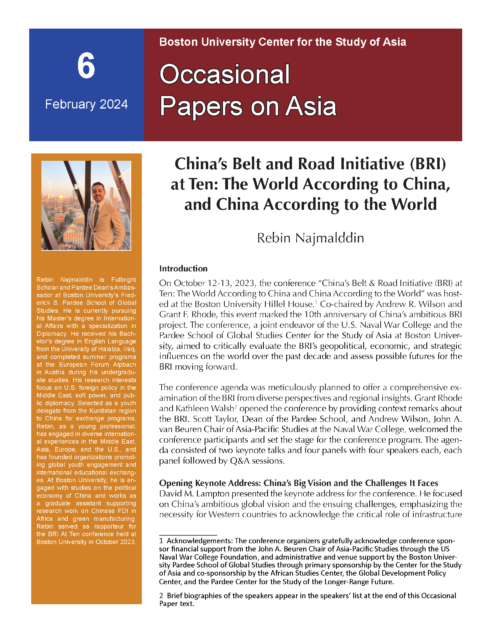 We are pleased to present the latest volume in our BUCSA series, Occasional Papers on Asia. In this volume, Rebin Najmalddin (Pardee School of Global Studies, Boston University) provides an excellent summary of the presentations and panel discussions from the October 12-13, 2023 conference, China’s Belt and Road Initiative (BRI) at Ten: The World According to China, and China According to the World, co-organized by Grant Rhode (Pardee School, Boston University) and Andrew Wilson (US Naval War College).
We are pleased to present the latest volume in our BUCSA series, Occasional Papers on Asia. In this volume, Rebin Najmalddin (Pardee School of Global Studies, Boston University) provides an excellent summary of the presentations and panel discussions from the October 12-13, 2023 conference, China’s Belt and Road Initiative (BRI) at Ten: The World According to China, and China According to the World, co-organized by Grant Rhode (Pardee School, Boston University) and Andrew Wilson (US Naval War College).
You can read this new Occasional Papers here and you can read more about the series of past presentations and conferences around the topic Assessing China's Belt and Road Initiative here.
Earlier volumes of Occasional Papers on Asia can all be found at:
https://www.bu.edu/asian/resources/occasional-papers-on-asia/
Rebuilding Community: Displaced Women and the Making of a Shia Ismaili Muslim Sociality, with Shenila Khoja-Moolji (at MIT, Feb. 21, 2024)
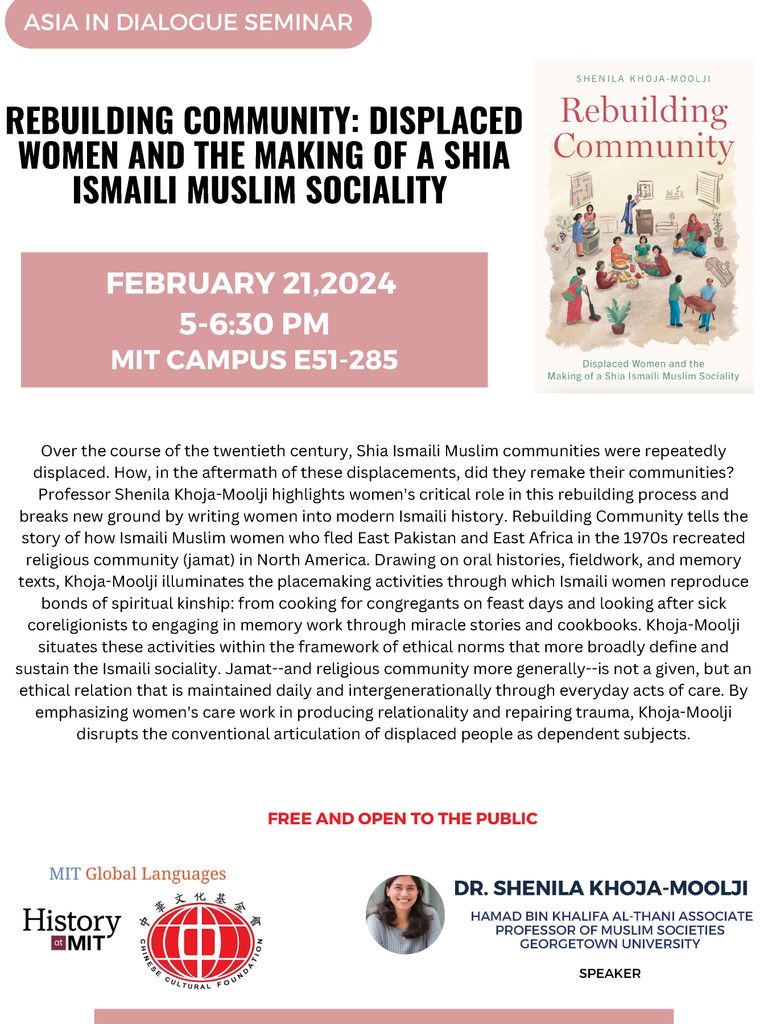
“Hallyu! The Korean Wave” exhibition at the Boston Museum of Fine Arts, opens March 24, 2024
From tradition to trendsetting
Today, South Korea is a cultural superpower—a global trendsetter producing award-winning films like Parasite, riveting dramas like Squid Game, and chart-topping music by K-pop groups such as BTS and BLACKPINK. But behind the country’s meteoric rise to the world stage—a phenomenon known as the Korean Wave, or hallyu—is the story of remarkable resilience and innovation.
Just a century ago, Korea was in search of a new national identity, following its occupation by Japan and the Korean War. Harnessing cutting-edge technology, the country has rapidly transformed its economy and international reputation. At the same time, its creative outputs are deeply rooted in its past, with many contemporary artists, filmmakers, musicians, and fashion designers paying tribute to traditional values and art forms dating back to Korea’s dynastic kingdom days.
ex-hallyu_exhibition-teaser-video
“Hallyu! The Korean Wave” features more than 200 objects—costumes, props, photographs, videos, pop culture ephemera, and contemporary works. Among the highlights are outfits worn by different generations of K-pop idols, dresses by couture designer Park Sohee and Next in Fashion winner Minju Kim, a large-scale needlework designed by South Korean artist Kyungah Ham and made by anonymous embroiderers from North Korea, and pieces exploring the Korean American experience by Timothy Hyunsoo Lee and Julia Kwon. Additionally, the exhibition showcases objects from the MFA’s own renowned collection of Korean art, from examples of the iconic moon jar and hanbok to an elaborately decorated gilt bronze case for sutras, the sacred Buddhist texts.
Join us on an immersive and multisensory journey through a fascinating history, and celebrate a vibrant creative force that bridges cultural, societal, and linguistic divides and continues to reach new heights today.

For full details, see https://mfa.org/exhibition/hallyu-the-korean-wave (from which the above text was taken).
New exhibition “Performance and Court in Indonesia” showcases Indonesian shadow puppets (Yale Art Gallery, New Haven)
“Performance and Court in Indonesia” is a new display for the Yale Art Gallery's Indo-Pacific department featuring Indonesian shadow puppets (“wayang kulit”) from the Dr. Walter Angst and Sir Henry Angest Collection. At the center of the gallery is a screen where a selection of puppets depicts scenes from the Indic epic “Mahabharata,” which is popular in Javanese performances.
Currently on view is a scene from the play “Irawan Rabi” (Irawan’s Wedding). Arjuna, shown at left, is accompanied by his two wives, Sumbadra and Srikandhi. They have come to tell Abimanyu, Arjuna and Sumbadra’s son, that he cannot marry his beloved Siti Sundari because her father, King Kresna, has promised her to the son of another king. The young pair is overcome with grief and collapses to the floor. At the far right, a spade-shaped “kayon,” a representation of the cosmic mountain and tree of life, frames the action.
The scenes in this shadow puppet display will change regularly, but they will all come from the royal set “Kyai Nugroho,” stored behind the screen in a large wooden box, as used in actual performances in the grand pavilion (“pendhapa”) of Prince Tejakusuma in the city of Yogyakarta. Shadow puppets are presented by a puppeteer, or “dhalang,” who performs all-night renditions of epic tales accompanied by a “gamelan” orchestra. Some spectators watch from behind the screen to appreciate the brightly-colored puppets and the performers in action, while others prefer to watch the shadows.
[This text is from https://www.instagram.com/p/C14P8h7ugDD/?img_index=7]
Click here to view the nearly 900 examples of wayang kulit shadow puppets in the Yale Art Gallery collection.
#YaleArtGallery #YUAG #IndoPacificArt #puppets #ShadowPuppets #puppetry #IndonesianPuppets #WayangPurwa #WayangKulit #WayangArt
Art of the Samurai: Japanese Arms and Armor (Worcester Art Museum, through Feb. 28, 2024)
Samurai, members of Japan's warrior class, ruled the country for nearly a millennium, from the 12th through the 19thcentury, and continue to be revered as symbols of bravery, loyalty, and honor. While they initially rose to power due to their military prowess, they maintained their elevated positions through political, financial, and cultural acumen. They were expected to hold administrative positions within their military government. In addition, and in contrast to the brutality of their profession, they also became highly-cultivated individuals, practicing and supporting the arts, such as calligraphy and painting. The elaborate arms and armor of the samurai thus speak to their duties as both warriors and statesmen; these materials could withstand the rigors of warfare, but were also aesthetic objects appropriate for ceremonial purposes and public display. During the peaceful Edo period (1615-1868), samurai arms and armor evolved from functional military gear to coveted symbols of wealth, status, and power.
The objects on display here demonstrate not only the delicate balance between, and paradoxical relationship of, bu and bun—the arts of war and of culture—that characterized Japan's great warriors, but also the evolving position of samurai arms and armor in Japanese society, culture, and craftsmanship.
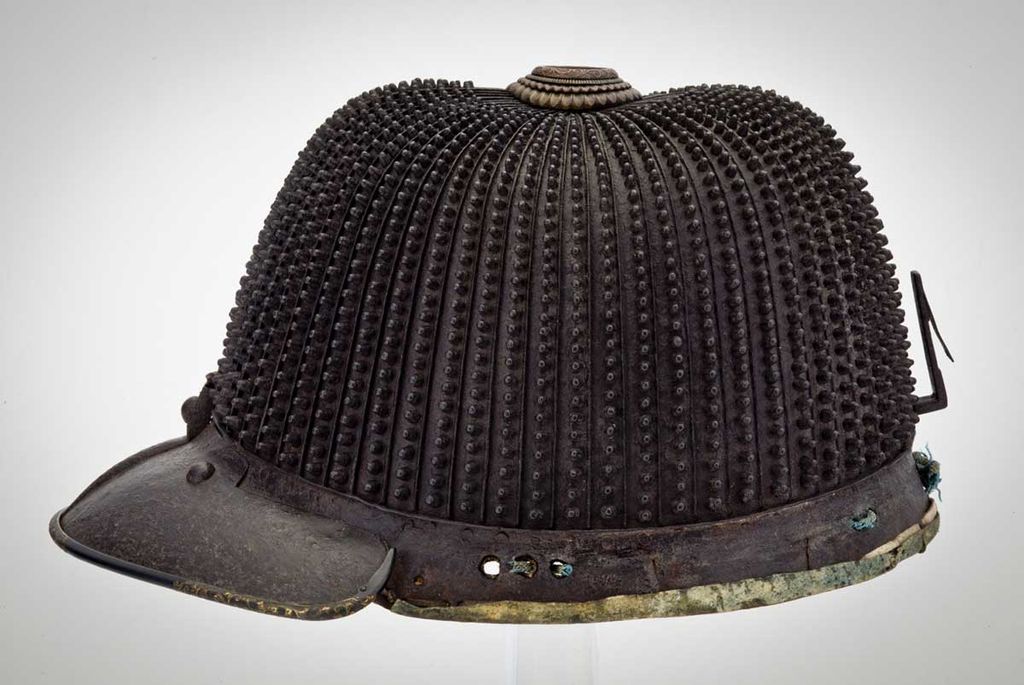
Japanese, 64-plate Hoshi Kabuto (rivet helmet), 1500s, iron, lacquer, copper alloy, gilded shakudo, leather, silk and fabric.
The John Woodman Higgins Armory Collection, 2014.720
This exhibition information is taken from the Worcester Art Museum's website https://www.worcesterart.org/exhibitions/japanese-rotation/, where much additional information can be found about other current and upcoming exhibitions!
Kimono Couture: The Beauty of Chiso (A virtual exhibition by the Worcester Art Museum)
Experience the world of traditional kimono design and artistry still practiced by Chiso, the 465-year-old, Kyoto-based kimono house in our virtual exhibition,
Kimono Couture: The Beauty of Chiso
Click here to enter this free virtual exhibition.
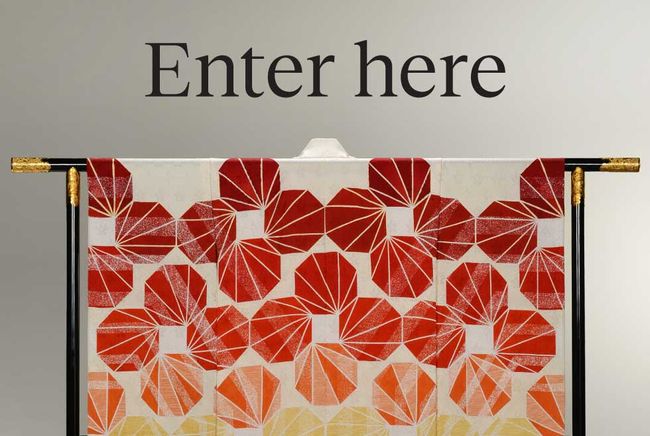
Congratulations on the publication of a new Soong Mayling biography with Esther Hu 胡斯慧 serving as English editor/translator!
We are pleased to note the recent publication of a new illustrated biography of Soong Mayling 宋美齡 (Madame Chiang Kai-shek, 1899-2003), entitled 佳美的腳蹤:宋美齡與她的時代 (Soong Mayling and Her Era: A Legacy of Grace and Resilience), edited by CHEN Liwen 陳立文, with Esther Hu 胡斯慧 serving as English editor and translator. The book attempts to break the stereotype of "great men" by exploring the nuances of the relationship, responsibilities, and commitments between Chiang Kai-shek and Soong Mei-ling in political, national, and personal spheres. The publisher notes that this book records Soong Mayling's life in three sections:
![]()
The first section, from birth, growth, to schooling, outlines the various aspects of the girl Soong Mayling, as well as her repeated exploration between Chinese and Western cultures.
The second section, starting from marriage and serving the country, uses the two reference planes of "her home" and "his country" to record that the couple shouldered the same yoke and led the country through stormy times. It also describes at great length Soong Mayling's unique contribution as a women's leader: she called on women to undertake various tasks for the country and the people, from promoting the "New Life Movement" to caring for bereaved families, caring for needy and sick children, providing comfort for soldiers and military dependents, and other causes
The third section, from "homeland" to "treasured island," provides a close profile of Chiang Kai-shek and Soong Mayling after they came to Taiwan.
Details about this new book can be found at http://www.rchcs.com.tw/bookdetail-1688.html
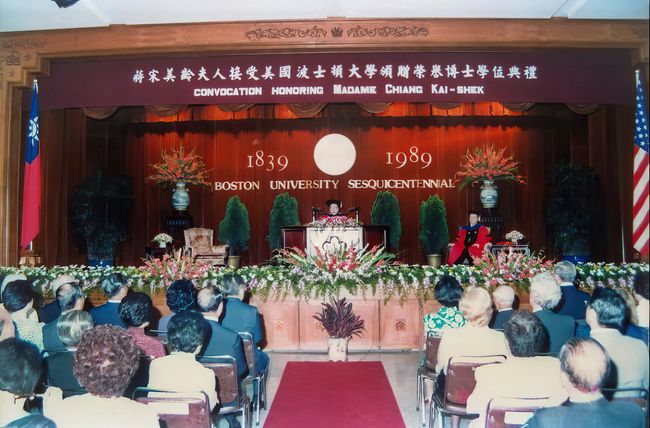
BUCSA Taiwan Forum: Taiwan Elections 2024, A Post-Elections Analysis with RYAN HASS (Jan. 25, 2024)
Join us at the Center for the Study of Asia's next Taiwan Forum lecture/discussion featuring foreign policy analyst Ryan Hass (Brookings Institution) as he explores the local, regional, and international ramifications of the January 2024 Taiwan presidential election.
This event is free and open to the public! To help us with seating and food planning, please register here or through the QR code in the image below. Thanks!

Note that this event will be held in
Kilachand Honors College (1st floor) at 91 Bay State Road
About the speaker: (from https://www.brookings.edu/people/ryan-hass/)
 Ryan Hass is director of the John L. Thornton China Center and the Chen-Fu and Cecilia Yen Koo Chair in Taiwan Studies at Brookings. He is also a senior fellow in the Center for East Asia Policy Studies. He was part of the inaugural class of David M. Rubenstein fellows at Brookings, and is a nonresident affiliated fellow in the Paul Tsai China Center at Yale Law School. Hass focuses his research and analysis on enhancing policy development on the pressing political, economic, and security challenges facing the United States in East Asia.
Ryan Hass is director of the John L. Thornton China Center and the Chen-Fu and Cecilia Yen Koo Chair in Taiwan Studies at Brookings. He is also a senior fellow in the Center for East Asia Policy Studies. He was part of the inaugural class of David M. Rubenstein fellows at Brookings, and is a nonresident affiliated fellow in the Paul Tsai China Center at Yale Law School. Hass focuses his research and analysis on enhancing policy development on the pressing political, economic, and security challenges facing the United States in East Asia.
From 2013 to 2017, Hass served as the director for China, Taiwan and Mongolia at the National Security Council (NSC) staff. In that role, he advised President Obama and senior White House officials on all aspects of U.S. policy toward China, Taiwan, and Mongolia, and coordinated the implementation of U.S. policy toward this region among U.S. government departments and agencies. He joined President Obama’s state visit delegations in Beijing and Washington respectively in 2014 and 2015, and the president’s delegation to Hangzhou, China, for the G-20 in 2016, and to Lima, Peru, for the Asia-Pacific Economic Cooperation (APEC) Leaders Meetings in 2016.
Prior to joining NSC, Hass served as a Foreign Service Officer in U.S. Embassy Beijing, where he earned the State Department Director General’s award for impact and originality in reporting, an award given annually to the officer whose reporting had the greatest impact on the formulation of U.S. foreign policy. Hass also served in Embassy Seoul and Embassy Ulaanbaatar, and domestically in the State Department Offices of Taiwan Coordination and Korean Affairs. Hass received multiple Superior Honor and Meritorious Honor commendations during his 15-year tenure in the Foreign Service.
Hass is the author of “Stronger: Adapting America’s China Strategy in an Age of Competitive Interdependence” (Yale University Press, 2021), a co-editor of “Global China: Assessing China’s Growing Role in the World” (Brookings Press, 2021), of the monograph, “The future of US policy toward China: Recommendations for the Biden administration” (Brookings, 2020), and a co-author of “U.S.-Taiwan Relations: Will China’s Challenge Lead to a Crisis?” (Brookings Press, 2023). He also leads the Democracy in Asia project at the Brookings Institution and is co-chair of the international task force on Taiwan convened by the Center for Strategic and International Studies.
Hass was born and raised in Washington state. He graduated from the University of Washington and attended the Johns Hopkins School of Advanced International Studies prior to joining the State Department.
Affiliations:
- American Council of Learned Societies for China Studies, member, steering committee
- Center for Strategic and International Studies, International Task Force on Taiwan, co-chair
- McLarty Associates, senior advisor
- National Committee on U.S.-China Relations, member
- The Asia Foundation, member, board of trustees
- The Scowcroft Group, senior advisor
- Yale Law School, Paul Tsai China Center, nonresident affiliated fellow
Lyrical Crossovers: Rendezvous between the Poetic and the Popular in China, 1100–1300, with Xiuyuan Mi (Lehigh University) (Monday, January 29, 2024)
How did poetry find its way into the popular circles and vernacular expressions of everyday life? How did the structured form of rhyme and meter enchant some while disconcerting others? The Boston University Department of World Languages & Literatures is pleased to present the lecture
Lyrical Crossovers: Rendezvous between the Poetic and the Popular in China, 1100–1300
Xiuyuan Mi
(Visiting Assistant Professor in Chinese, Lehigh University)
Monday, January 29, 2024 from 5:30-7:00 pm
in STH 625 (School of Theology, 745 Commonwealth Avenue, Boston, MA 02215)
Abstract:
How did poetry find its way into the popular circles and vernacular expressions of everyday life? How did the structured form of rhyme and meter enchant some while disconcerting others? Drawing on extant and excavated sources beyond literary history, this talk traces poetry's expanding cultural and political influence amidst the burgeoning market economy and urban spaces in China between the 11th and the 13th centuries. In this era, patterned speech not only intertwined with a variety of popular performances but also played a pivotal role in promoting functional literacy. As it merged with print and material culture, poetry’s permeation into daily life carved out an atemporal space within personal realms, offering the general populace an anchor to explore alternate realities. Meanwhile, it also complicated the contemporary political scene with a cacophony of public opinions.
About the Speaker:
 Xiuyuan Mi is Visiting Assistant Professor in Chinese at Lehigh University. She holds a Ph.D. and an M.A. in premodern Chinese literature from the University of Pennsylvania and a BA in English literature from the College of William and Mary. Her current book project traces the interplays between poetry, performance, religion, and material culture in China from the beginning of the second millennium until the Mongol conquest. Her recent publications appear in the Journal of Song-Yuan Studies and Sino-Platonic Papers. She is also a co-editor of the Dictionary of Medieval Sinitic, forthcoming with Brill. Her next project will explore the formative stages of Chinese Muslim culture through the literary activities of Central Asian immigrants under Mongol rule.
Xiuyuan Mi is Visiting Assistant Professor in Chinese at Lehigh University. She holds a Ph.D. and an M.A. in premodern Chinese literature from the University of Pennsylvania and a BA in English literature from the College of William and Mary. Her current book project traces the interplays between poetry, performance, religion, and material culture in China from the beginning of the second millennium until the Mongol conquest. Her recent publications appear in the Journal of Song-Yuan Studies and Sino-Platonic Papers. She is also a co-editor of the Dictionary of Medieval Sinitic, forthcoming with Brill. Her next project will explore the formative stages of Chinese Muslim culture through the literary activities of Central Asian immigrants under Mongol rule.
A Paradox of Seeing and Knowing: Rethinking the “Storyteller’s Manner” Narrative Mode in Chinese Vernacular Fiction, with Canaan Morse (Weds. January 31, 2024)
Boston University's Department of World Languages and Literatures is pleased to present
A Paradox of Seeing and Knowing: Rethinking the “Storyteller’s Manner” Narrative Mode in Chinese Vernacular Fiction
Canaan Morse
Visiting Assistant Professor of Premodern Chinese Literature, Boston University
Wednesday, January 31, 2024 from 5:30-7:00 pm
in STH 625 (School of Theology, 745 Commonwealth Avenue, Boston, MA 02215)
Abstract:
This talk re-evaluates the “storyteller’s manner” – a dominant narrative mode in premodern Chinese vernacular literature which simulates the persona of an oral storyteller – by dating one of its central stylistic features earlier than previously thought, and by demonstrating how that feature contributes to a unique receptive context likely inspired by oral performance. It unpacks a narrative paradox in the 13th-century poem-tale Tripitaka of the Tang Empire Fetches the Scriptures (ancestor of the later novel Journey to the West), in which verbs of sensing create a “simulacrum of seeing” that presents individual scenes as live events, even while the tale repeatedly depicts its own story arc as a foregone conclusion known to both speaker and reader. In fact, the superficial conflict between the “seen” scene and “known” tale reflects a narrative dynamic common to oral storytelling, in which a participatory immersion in the bounded episode enables re-connection to the larger tradition. This symbiosis between style and theme imbues the “storyteller’s manner” with far more thematic significance than it is usually afforded, and changes our understanding of narrative causality and reader expectations in many of the Ming-dynasty stories in which it appears.
About the Speaker:
 Canaan Morse is Visiting Assistant Professor of Premodern Chinese Literature at Boston University. His current book project, Reading as Reliving: Tradition and Transmediality in Vernacular Chinese Fiction, explores the intersection of performance and print in popular literatures of China's Ming dynasty, enriching the study of ancient texts with fieldwork on living Chinese oral performance traditions. In addition, his translations of contemporary Chinese literature have won the Susan Sontag Prize for Translation and been named a 2021 Finalist for the National Book Award.
Canaan Morse is Visiting Assistant Professor of Premodern Chinese Literature at Boston University. His current book project, Reading as Reliving: Tradition and Transmediality in Vernacular Chinese Fiction, explores the intersection of performance and print in popular literatures of China's Ming dynasty, enriching the study of ancient texts with fieldwork on living Chinese oral performance traditions. In addition, his translations of contemporary Chinese literature have won the Susan Sontag Prize for Translation and been named a 2021 Finalist for the National Book Award.





